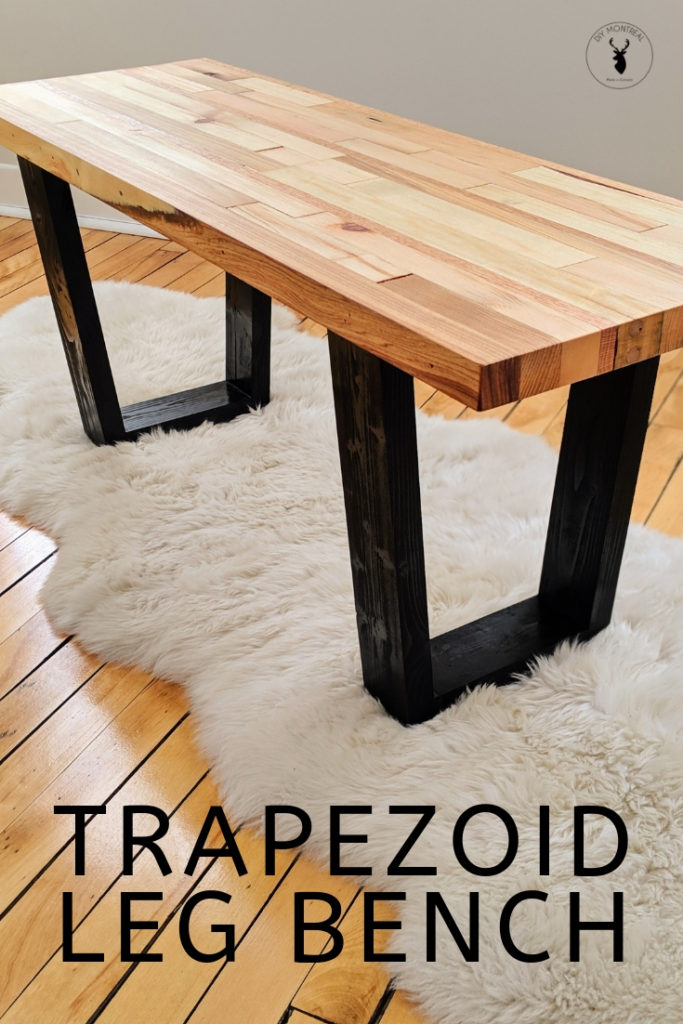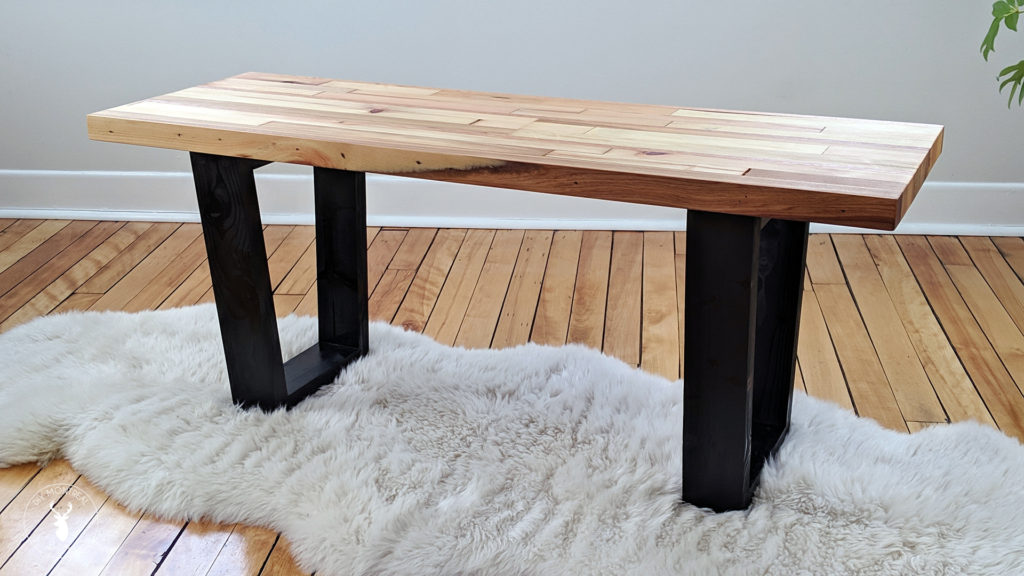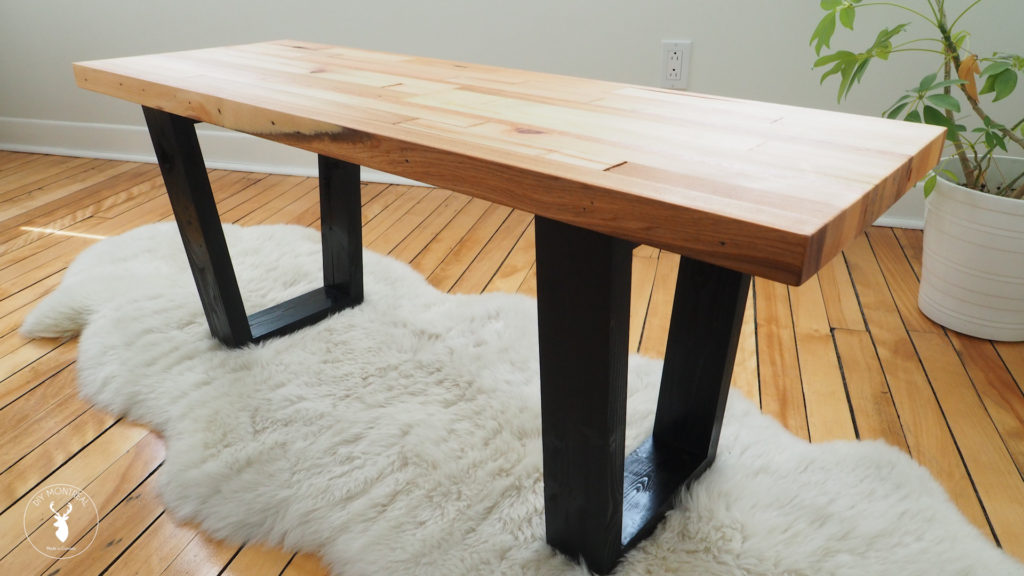
I’ve had these old wooden doors in my garage for some time now. The doors were here when I bought the house a few years ago, but don’t seem to belong anywhere in the house. Now, my house was built in 1915, so these are solid core doors, and boy are they heavy. Unfortunately the doors have been exposed to years of water damage and really aren’t salvageable.
GET THE FREE PLANS
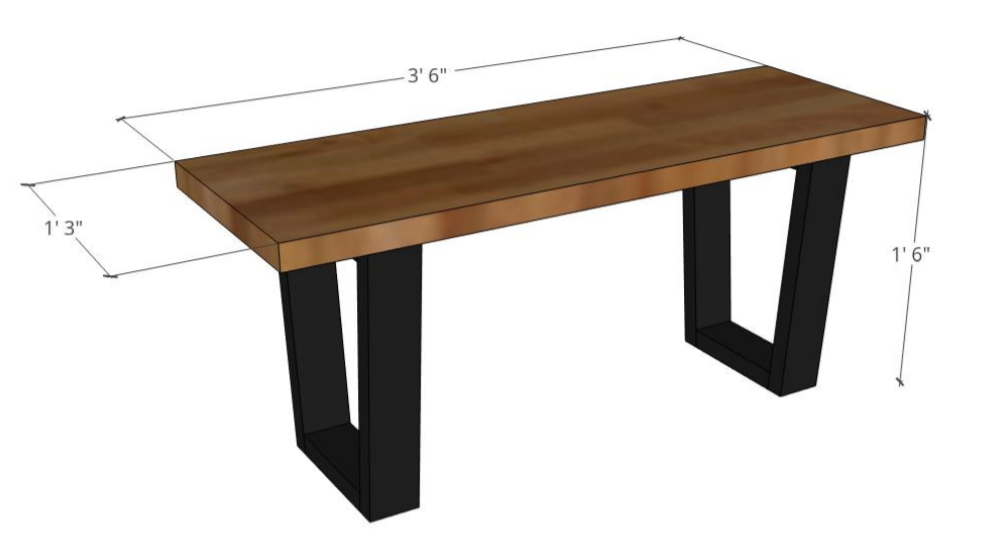
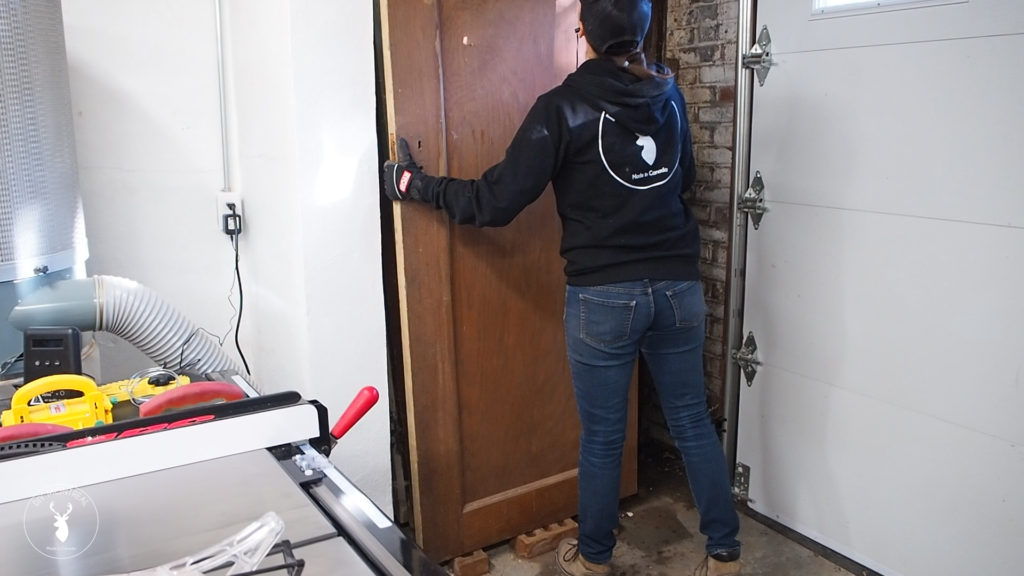
I discovered by fluke one day that antique solid core doors aren’t actually made up of large chunks of solid wood. The inside is actually kind of like a butcher block and then a wood veneer makes up the outer layer. Let’s take this door apart and I’ll show you exactly what I’m talking about.
Build the BenchTop
I started cutting apart the door using my circular saw. I don’t know if it’s this old saw or my blade or just the thickness of the door, but this step was not as effortless as I had imagined.
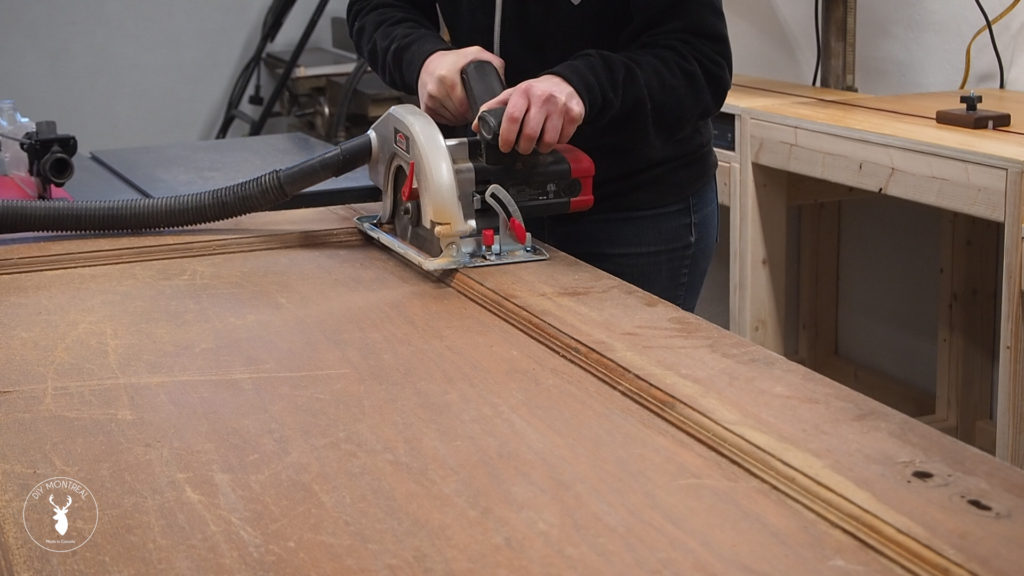
At this point I could simply remove the trim and hammer loose the opposite side so I could remove the center panel. I then hacked away the remaining side until I got it free.
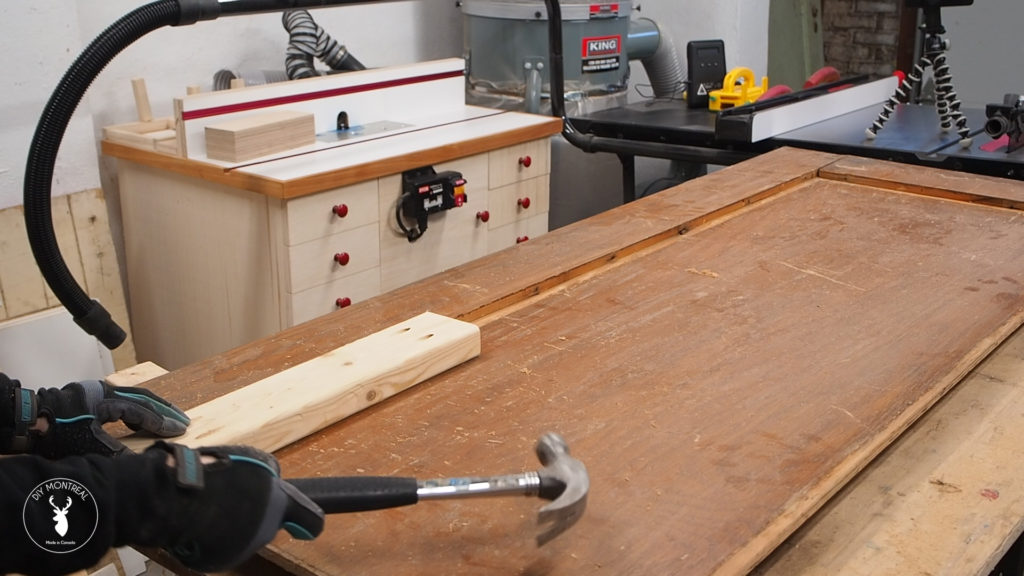
After removing any left over nails, I ran the boards through my planer to remove the outer veneer. It took several passes through the planer and let me tell you, this is pretty rough on the motor and the blades to try and power through the veneer and glue. I wasn’t too worried though since this is my older planer that I bought used a few years back and that I kept just for such an occasion. Eventually, after several passes, the inner core is revealed: a really cool butcher block made from a few different wood species. This should make a pretty cool bench I think.
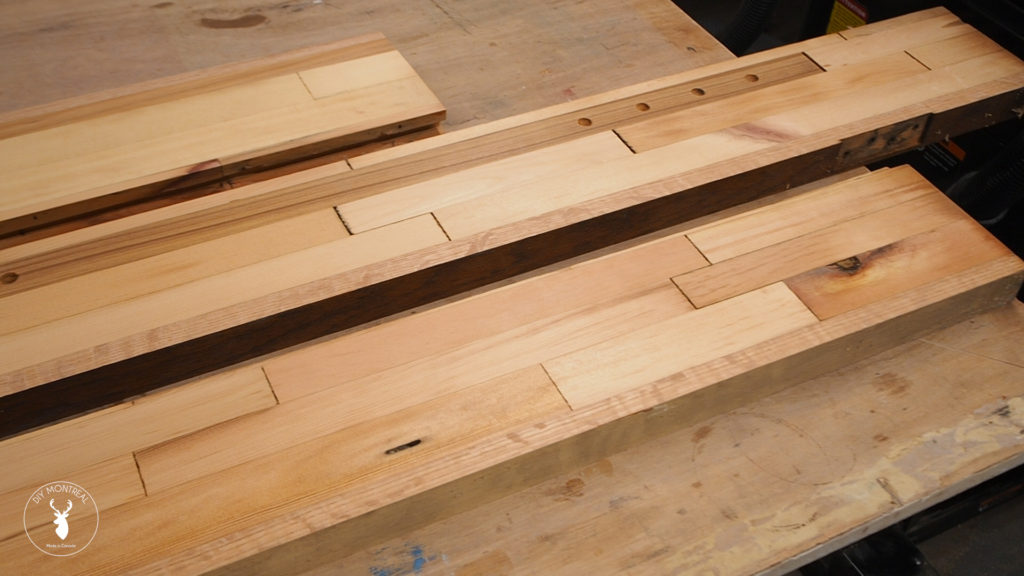
I the boards through my jointer a few times to square up the long edges and prep for glue up. The last step before that is to trim off the opposite edge to make both edges parallel.
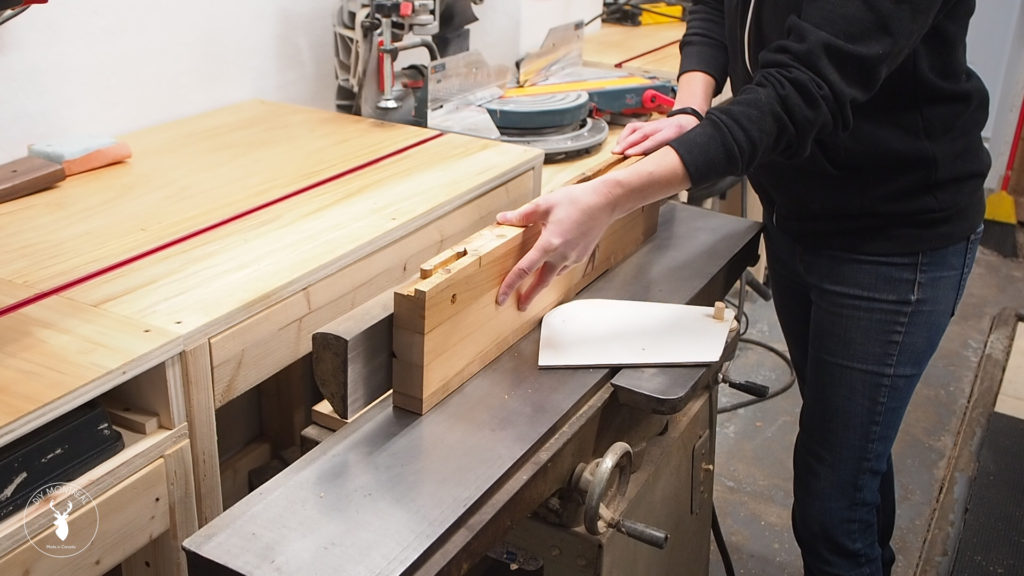
All 4 edges should now be square and opposing faces parallel to each other, which will make the glue up a lot easier. I applied glue and clamps, and let the glue dry overnight.
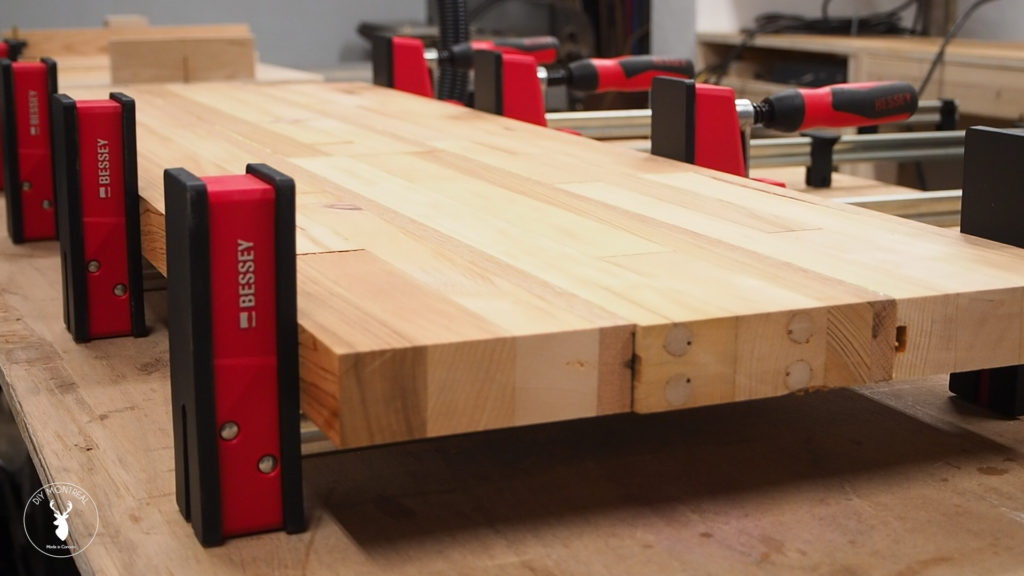
Build the Trapezoid Legs
While the benchtop was drying I moved onto the legs. Since I’m planning to paint the legs black, I’m just going to use some leftover 2 by 4s I have on hand. I want to remove the rounded edges though, and make the boards nice a square with crisp edges, so I’m running them through my planer a few times on edge and then running them through again on the face. You could also do this just by trimming off the edges using a table saw.
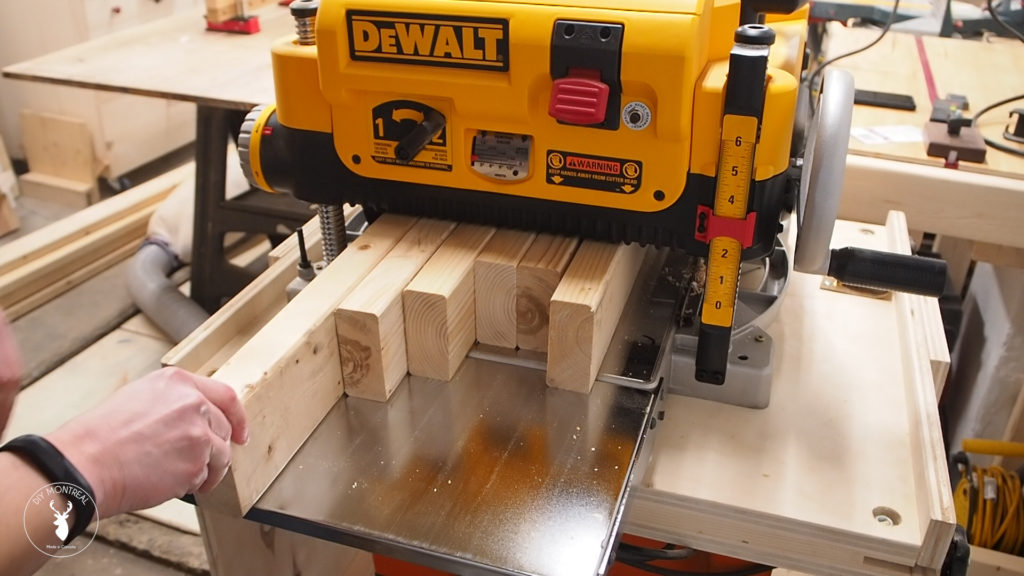
This is my first time making trapezoid legs. The truth is that I made a resolution this year that I would try to include angles and curves in my builds, so here I am. To figure out the right angle, I sketched it out, and calculated that the perfect angle should be 85 degrees.
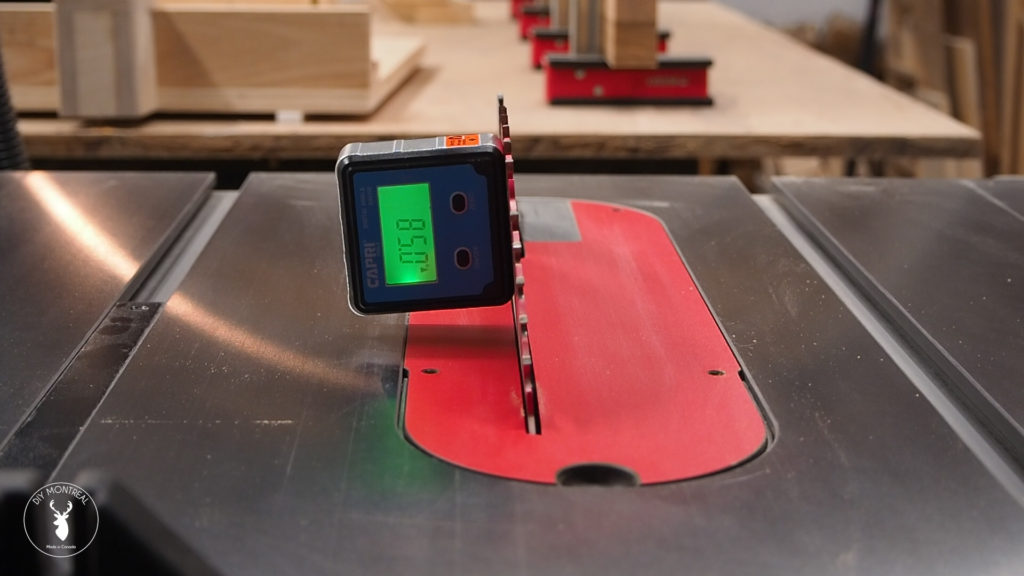
After timing off one side of each piece, I used a stop block to cut the opposite ends of the boards. This way I get repeated cuts at the exact same length.
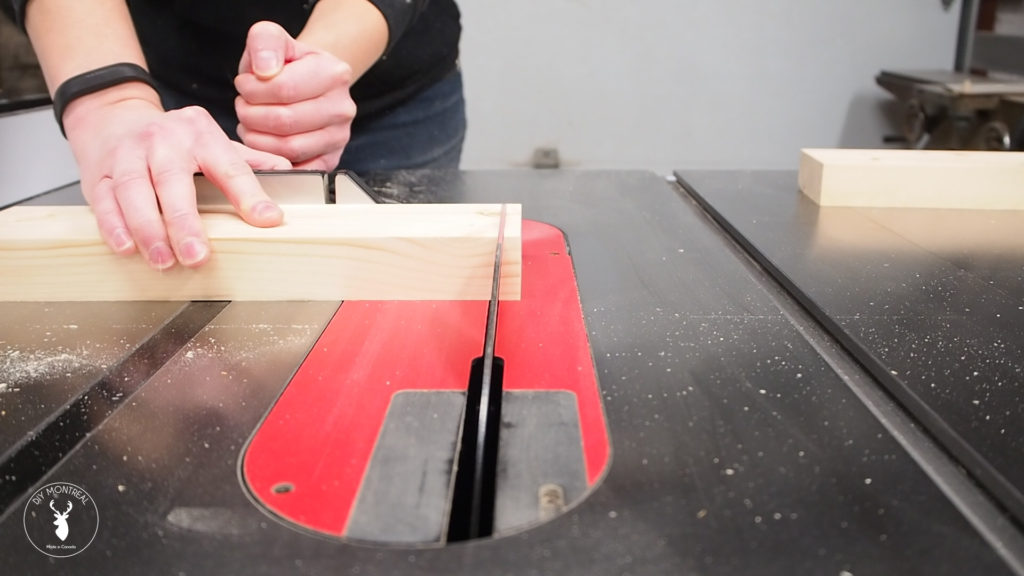
If you’re wondering how to figure out the right measurements, I have free plans available with all the dimensions. CLICK HERE FOR THE FREE PLANS.
I’m going to assemble the legs using concealed screws and dowel plugs. I figured I should make a template in order to accurately drill the dowel holes, and to match the 85 degree angle.
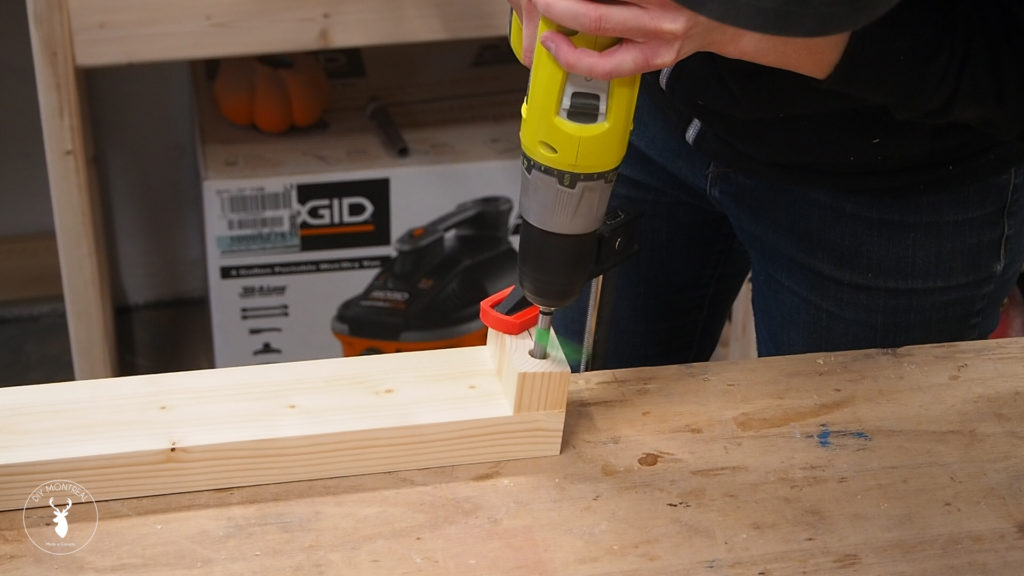
After that, I also used a small cut off to help drill some pilot holes. My goal here was to to set it so the edge was perpendicular to the table so I could then drill straight down.
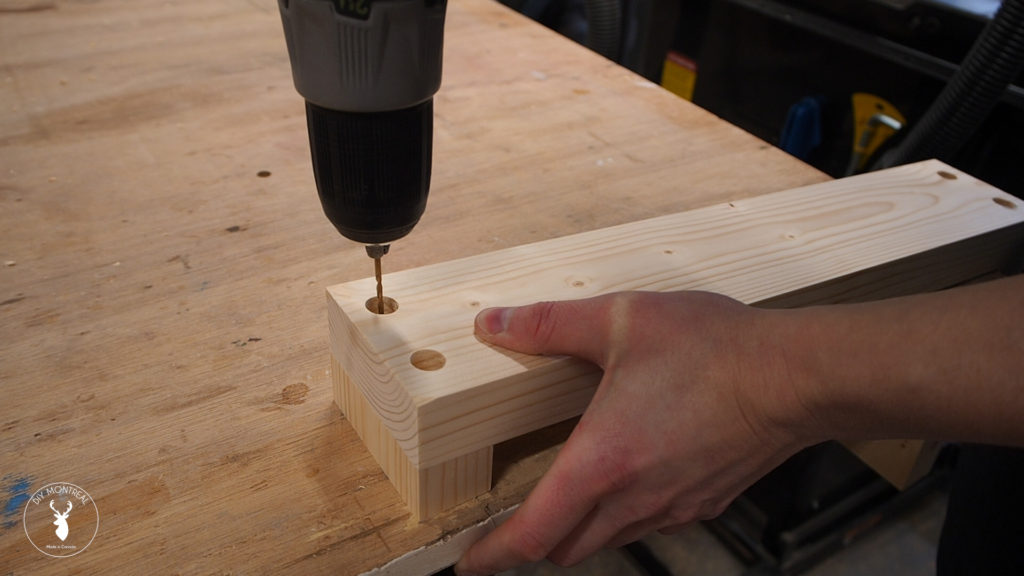
With the pilot holes made I could start assembling the legs. I used a clamp to hold the alignment while I screwed it together.
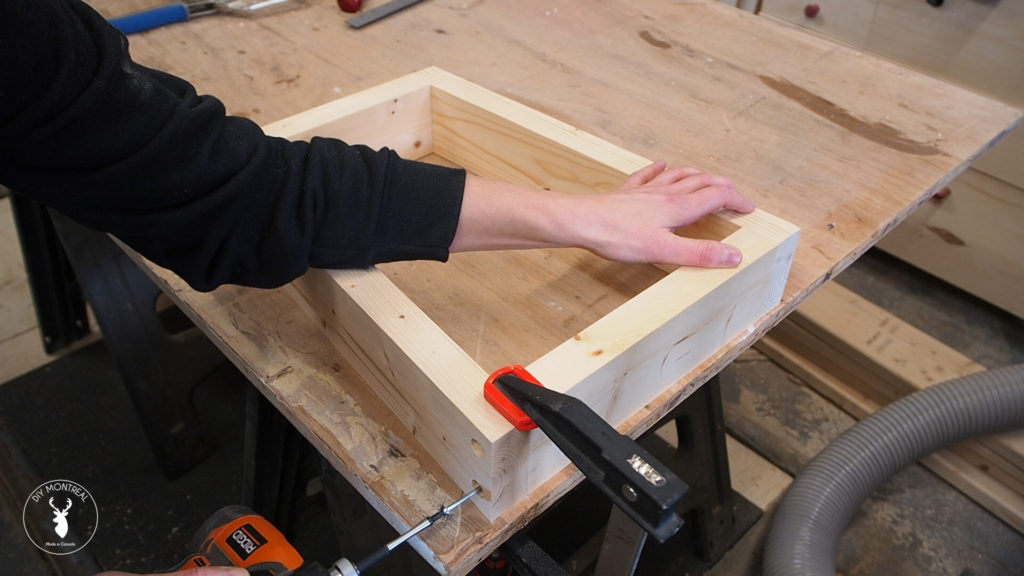
Next I cut up some short dowel plugs and glued them into the holes to hide the screws. After the glue dried, I used a flush cut pull saw to trim them down. I then used my orbital sander to get them perfectly flush. I gave the whole thing a good sanding before turning my attention back to the benchtop.
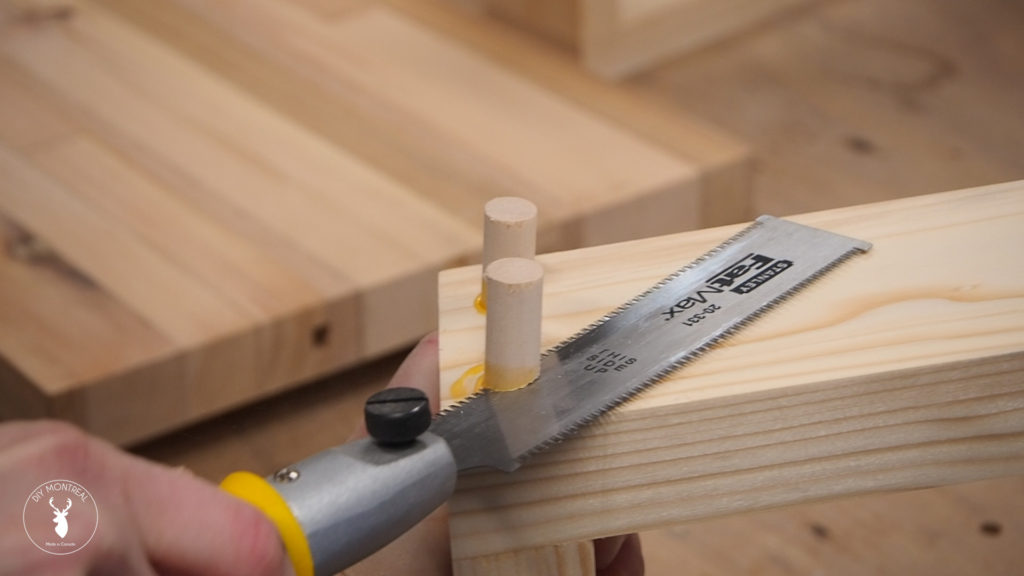
After letting the glue dry I could remove the clamps and trim the benchtop down to size while squaring up the edges. I used a T-square to mark a reference line I used to clamps down a fence. I could then simply follow the fence to trim the edges with my circular saw.
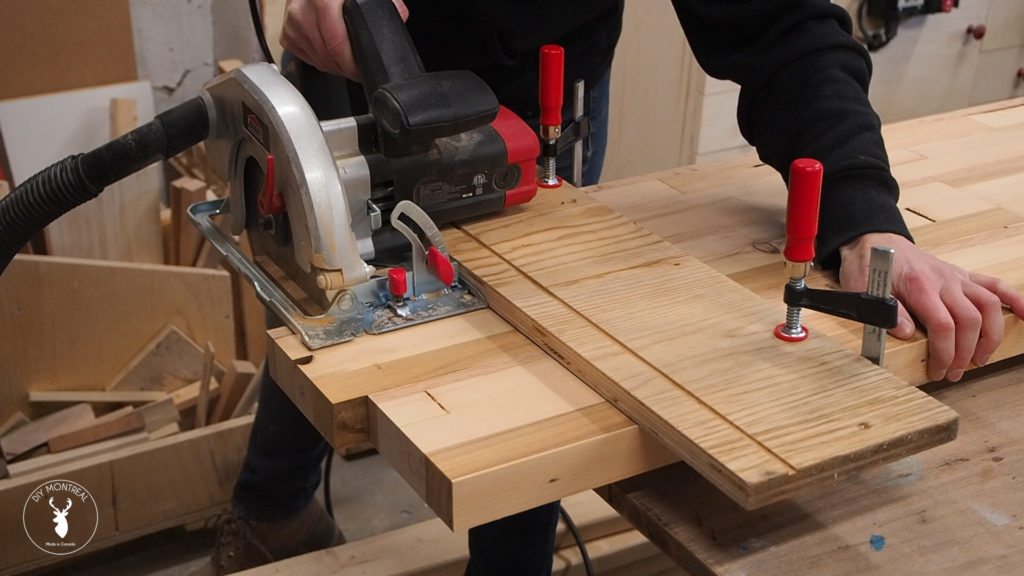
After sanding down the entire top and making sure to break the edges, it was time for finish. I went with a Danish oil clear coat finish to bring out the natural wood grain.
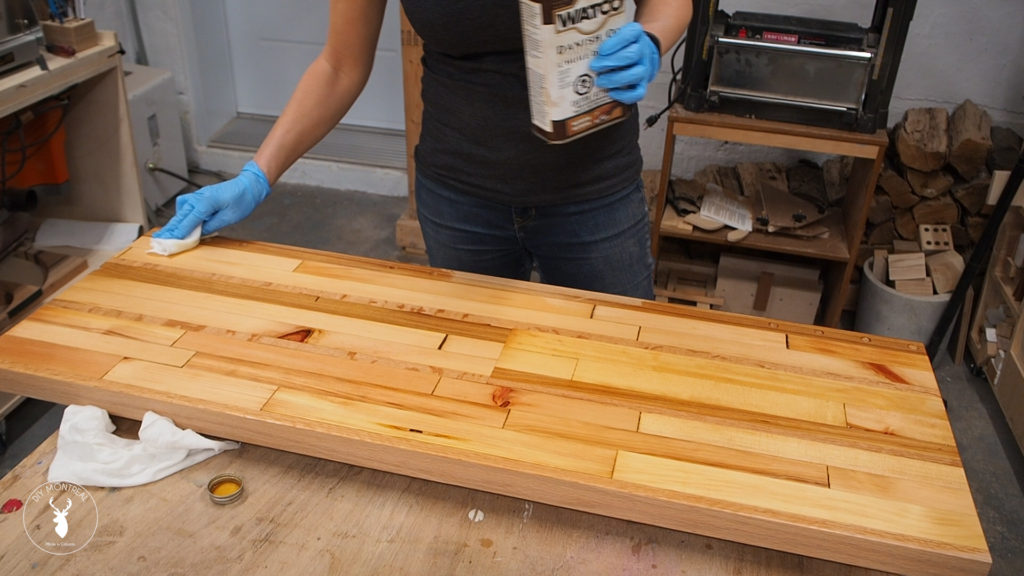
Before applying finish to the legs, I drilled some coutersunk screw holes which will be used to attach the legs to the bench top. I then drilled an elongated pilot hole for the screws, which will allow for wood movement in the benchtop.
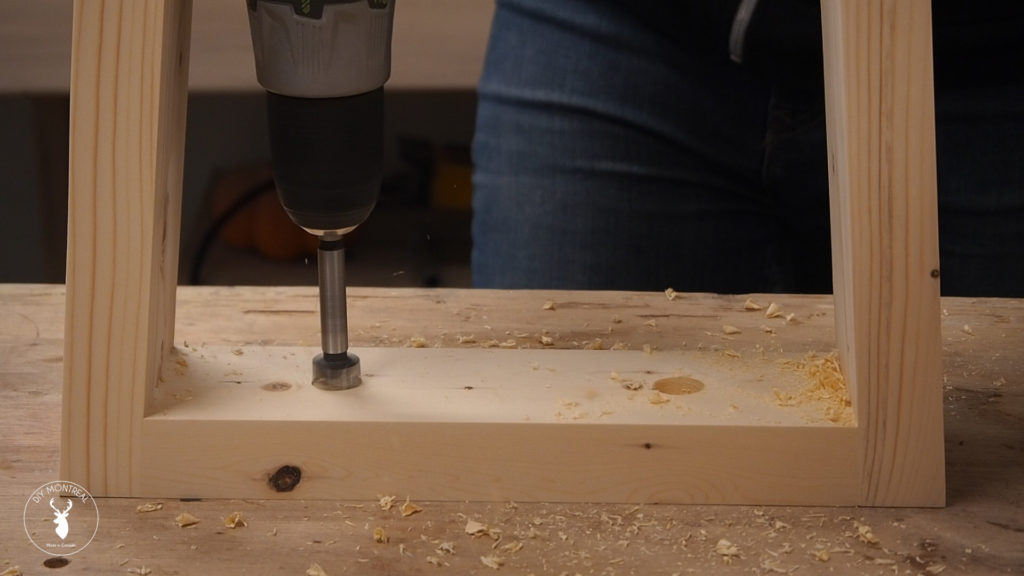
I wanted to give the legs the look of steel so I finished them with a few coats of black spray paint. Once everything had dried, I marked out the location for the legs and dropped them into place. I then screwed them to the benchtop using pocket hole screws coupled with a washer.
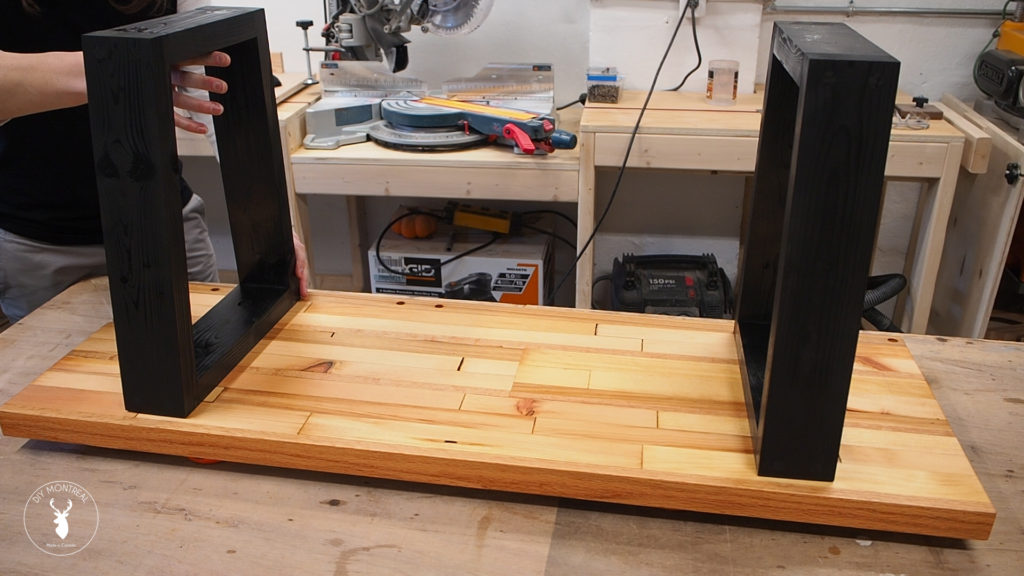
Hope you liked this project! If you haven’t already, be sure to watch the build video and grab the free plans!
